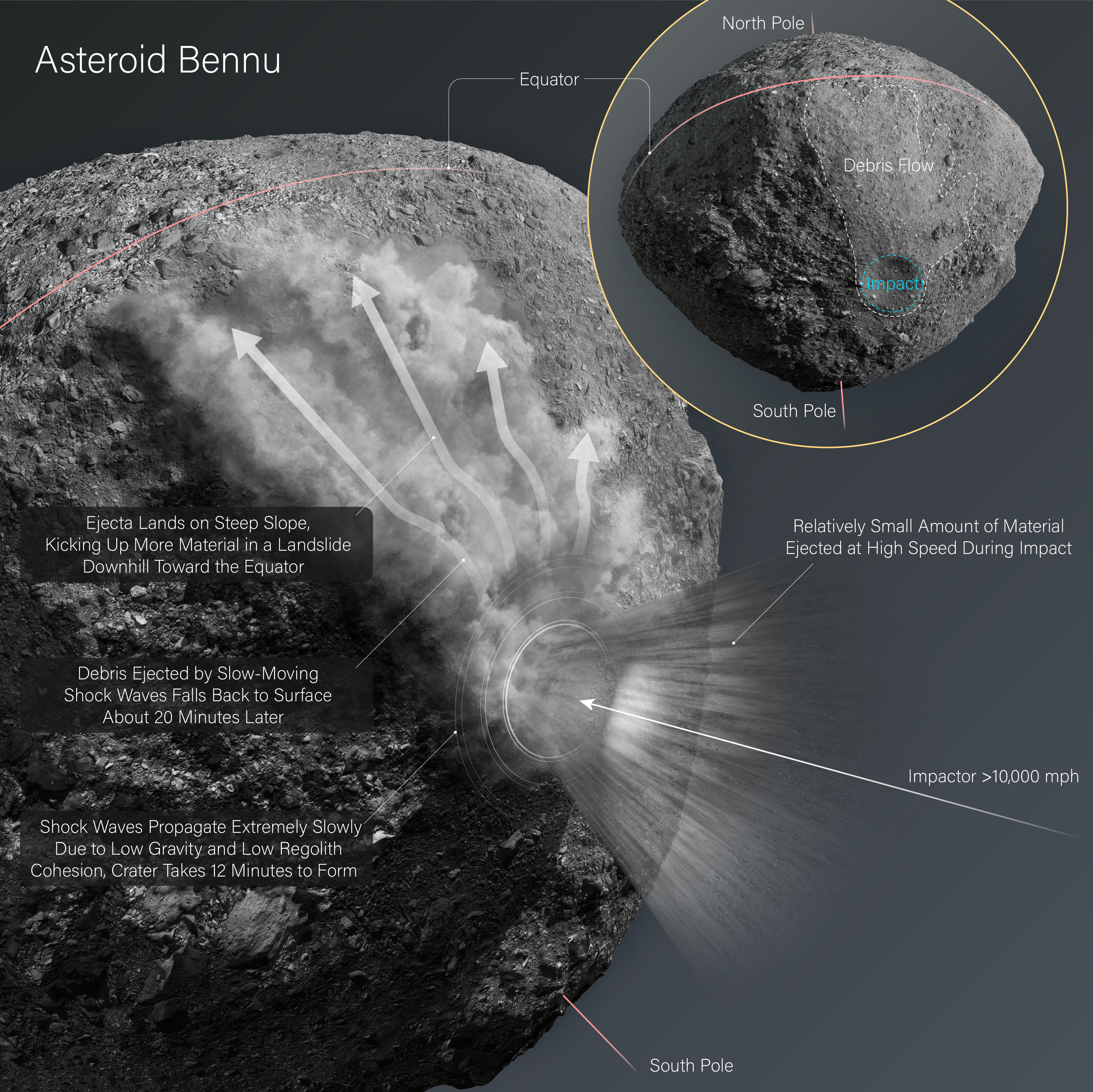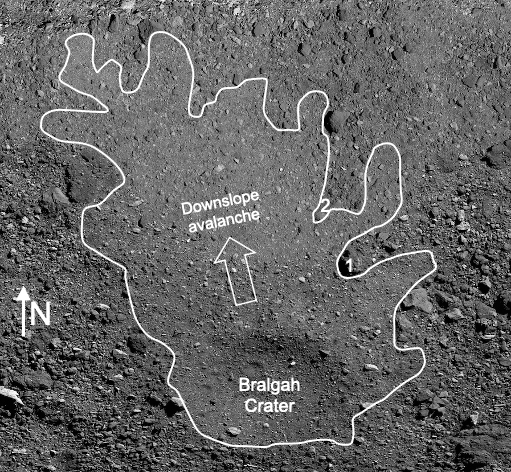Asteroids regularly pound planetary surfaces across the solar system, but how well they can take a hit tells a lot about the structure of these space rocks.
A team of scientists led by Mark Perry of the Johns Hopkins Applied Physics Laboratory (APL) in Laurel, Maryland, has gained new insight into the surface strength — or weakness — of so-called rubble-pile asteroids, the loose collections of smaller rocks and dust held together by their own gravity. Conducting some geological forensics with images taken by NASA’s OSIRIS-REx spacecraft, the researchers traced the steps of an impact-induced landslide on the asteroid Bennu, concluding that only certain surface properties — specifically, dry dust particles with practically no cohesion — could have led to such an event.

“The landslide started when debris from a meteoroid impact fell back onto Bennu’s surface,” said Perry, lead author of a paper on the research in the journal Nature Geoscience. “And when an object hits a surface that hard — from 5 to 20 kilometers [3 to 12 miles] per second — you expect the material on the surface to flash up at an equally high velocity. If the object you hit is loosely packed, the material goes up at a lower velocity. In either case, we’d expect most of the material to jump off into space, but that’s not what happened during this impact.”
Instead, most of that material, called ejecta, returned to the surface and slid down the face of the asteroid, starting a wide avalanche that slowly rolled toward Bennu’s equator. Perry said the only way this could happen on a small object like Bennu, which is less than 500 meters (1,640 feet) in diameter and has low gravity, is if the dust had low or next to no cohesion.

“Because Bennu is so small, its escape velocity is less than a few tenths of a mile per hour, so any particle ejected faster than that would leave the surface,” he said. “These slow speeds are possible only if Bennu’s surface is weaker than we thought, even weaker than very loose, dry sand. This extremely low surface strength also means material on a slope is easily disturbed, and that’s what led to the landslide.”
Scientists detected other clues to the strength on and below Bennu’s surface. The impacting meteoroid was only about 50 centimeters (20 inches) wide yet created a 70-meter-wide (230-foot-wide) crater. And this landslide can only form if the surface particles have essentially no attraction for each other and can move easily. Likewise, terraces, discovered by APL’s Olivier Barnouin, Perry and colleagues and documented in an April article in the Journal of Geophysical Research: Planets, are step-like structures that circumvent Bennu in an east-west direction and result from widespread rocks creeping (sliding) downhill. This surface creep can only happen if the surface of Bennu is extremely loosely bound.
The researchers estimate that while Bennu’s surface strength is about four orders of magnitude weaker than the surfaces of larger asteroids and the Moon, it is consistent with estimates of other rubble-pile asteroids, such as Ryugu, explored by the Hayabusa2 spacecraft in 2018-19.

“The opportunity to see and study the effects of impacts on Bennu’s surface is critical to our understanding of rubble-pile asteroids,” Perry said. “The more we learn about the evolution, composition and structure of these fascinating objects, the more insight we gain into the role they played in forming the solar system we know today and that they could play in future exploration of worlds beyond our own.”
The University of Arizona leads the OSIRIS-REx science team and the mission’s science observation planning and data processing. NASA’s Goddard Space Flight Center in Greenbelt, Maryland, provides overall mission management, systems engineering, and the safety and mission assurance for OSIRIS-REx. Lockheed Martin Space in Littleton, Colorado, built the spacecraft and provides flight operations. Goddard and KinetX Aerospace are responsible for navigating the OSIRIS-REx spacecraft. OSIRIS-REx is the third mission in NASA’s New Frontiers Program, managed by NASA’s Marshall Space Flight Center in Huntsville, Alabama, for the agency’s Science Mission Directorate at NASA Headquarters in Washington, D.C.
Related Topics
Science
For Media Inquiries
For all media inquiries, including permission to use images or video in our gallery, please contact:
Michael Buckley
All Media Resources

